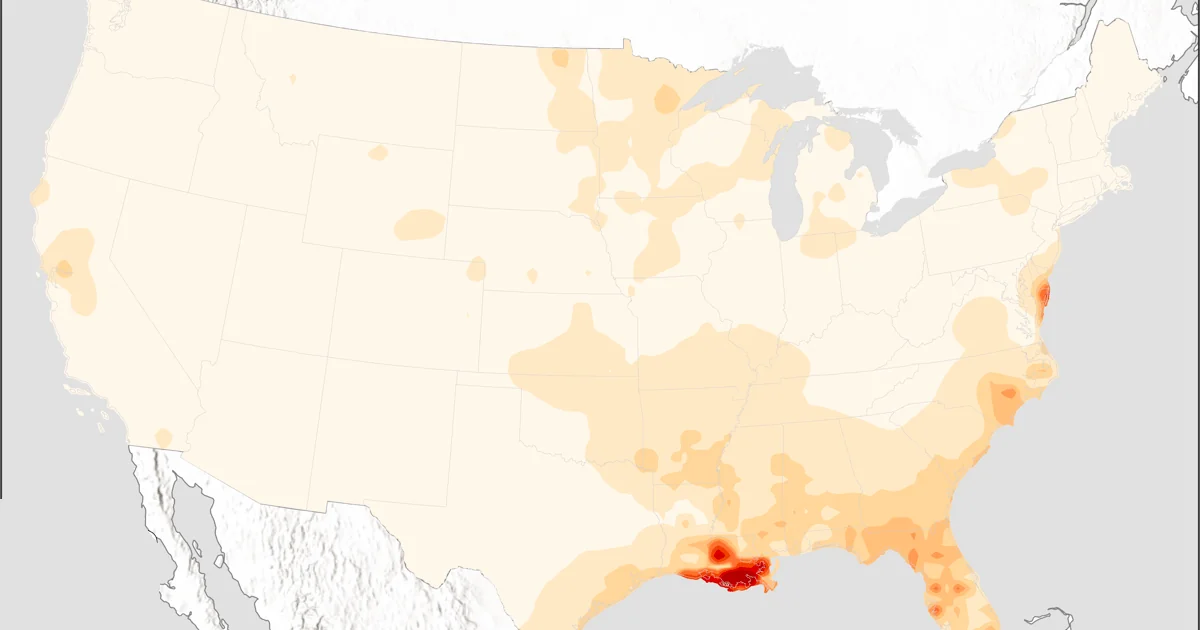U.S. Fish and Wildlife Service Report Reveals Accelerated Wetland Loss (2009–2019)
Wetlands are precious: as vital ecosystems, hosts of biodiversity, and even as one of the planet’s largest sources of carbon storage.
Yet, the latest report from the U.S. Fish and Wildlife Service, covering the years 2009-2019, paints a concerning picture of wetland status across the contiguous United States.
In sum: The number of wetlands in the U.S. diminished significantly during the report term. There was a net loss of 221,000 acres of wetlands, primarily due to conversion to upland, representing a 50% acceleration in wetland loss rate compared to the previous study period (2004–2009).

Extent and Rate of Wetland Loss During the Study Period
The United States began the decade with approximately 116.4 million acres of wetlands, a treasure trove of biodiversity occupying less than 6% of the nation’s area. This period witnessed an astonishing net loss of 221,000 acres of wetlands, predominantly converting to upland areas—a rate 50% faster than the preceding five years.
This loss not only diminishes the country’s natural heritage but also signals a shift in the balance of wetland types, from the lush vegetated to the bare non-vegetated.
Shifts in Vegetation and Wetland Type Composition
Vegetated wetlands took the largest hit, with a net decrease of 670,000 acres. Non-vegetated wetlands expanded by 488,000 acres.
Saltwater wetlands mirrored this trend, with salt marshes dwindling by 2% as non-vegetated areas grew.
In the freshwater realm, forested wetlands retracted, leaving room for an upsurge in pond areas by 455,000 acres.
Ecological and Hydrological Consequences of Wetland Change
The ramifications of these changes are profound. Wetland loss not only undermines water quality and increases vulnerability to natural disasters but also impacts the intricate web of life they support. Many species, some already teetering on the brink of extinction, find their futures even more precarious in the face of dwindling habitats.
Policy Recommendations and Conservation Imperatives
This report is a clarion call for concerted conservation efforts.
To stem the tide of wetland loss and ensure the preservation of their myriad benefits, a strategic overhaul of our approach to wetland conservation is imperative.
As the report suggests, we must achieve a “No Net Loss” of wetlands and enhance wetland conservation practices, underscore the need for immediate and decisive action.
We need:
- Policy that prioritizes wetland protection
- Incentives to support environmentally friendly and sustainable development
- Data to support strategic planning
The Role of Accurate Data and Monitoring in Wetland Strategy
At Ecobot, we understand the critical role technology plays in conservation efforts. By leveraging innovative tools and data analytics, we empower professionals to make informed decisions that contribute to the preservation and restoration of wetland ecosystems. Together, we can turn the tide, ensuring that wetlands continue to thrive for generations to come.
The first step to strategizing around wetland preservation is having the data to form a plan. Tools like Ecobot enable ground-truth data collection and long-term analyses of wetlands. Resources like the National Wetlands Inventory—the database on which the 2009-2019 report was based—are critical for monitoring large-scale wetlands trends like those identified in the report.
As we move forward, let’s leverage robust data collection, recommit to the stewardship of our wetlands, not just for their ecological services but for the biodiversity and life they sustain, and strategize to promote wetland preservation alongside sustainable development.
We can safeguard these irreplaceable ecosystems for the health of our planet and future generations.


